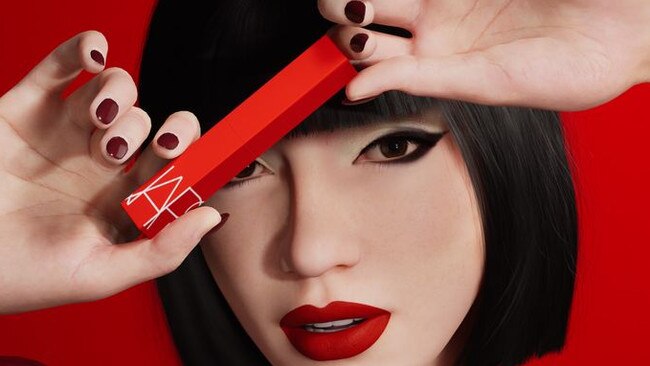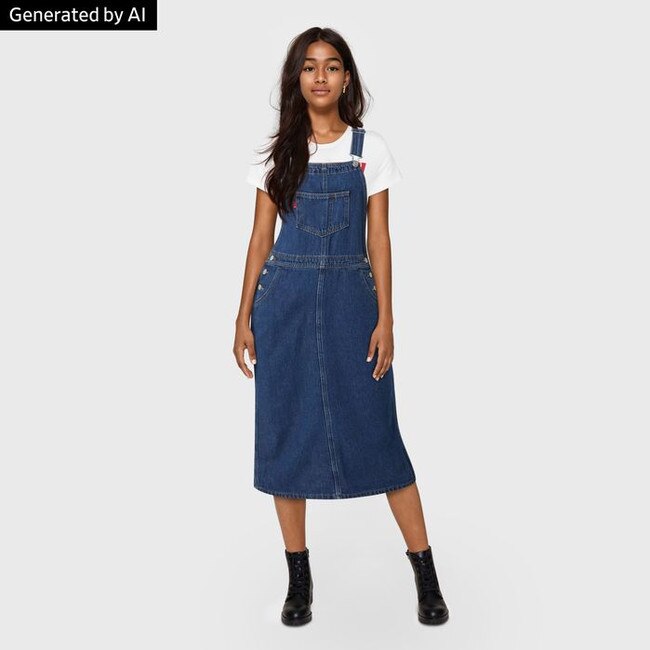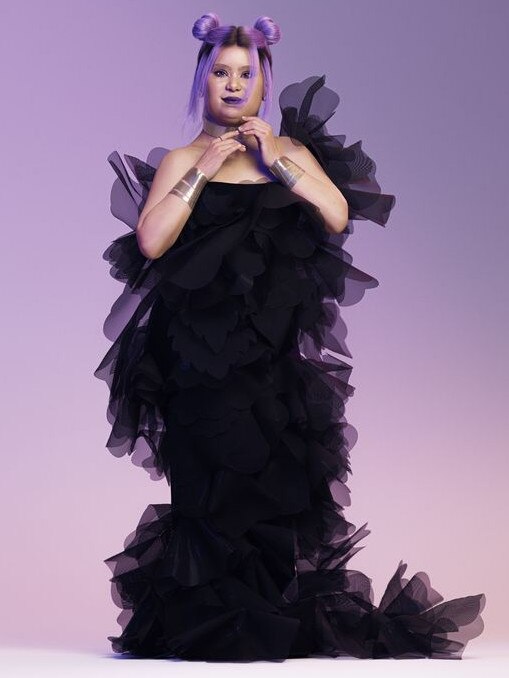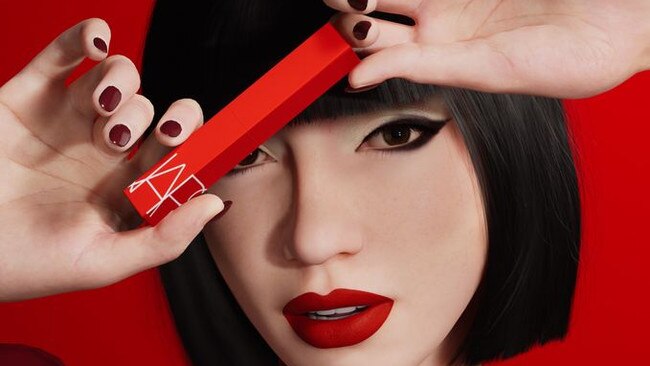Is that a model or AI?
Companies say computer-generated models could help brands show a wider range of identities and bodies. Humans still have a role to play.

Imagine browsing an e-commerce site while hunting for new clothes. You click on a sweater that catches your eye and see it displayed on a range of different models. Then you look closer: Is that a person, or the work of artificial intelligence?
With generative-AI platforms such as Midjourney and Dall-E, anyone can render uncannily lifelike models with a mere text prompt. Easy to make and customisable, AI-generated models offer brands and retailers a fast, cost-effective alternative to traditional, resource-intensive photo shoots. Those usually require at least one model, a photographer, a makeup artist, a hairstylist, a fashion stylist and a crew — all of whom need to get paid.
There’s also a possibility for AI models to increase representation and size diversity in mainstream fashion imagery. That’s one of the goals Michael Musandu hopes to achieve with Lalaland.ai, a digital studio in Amsterdam that builds customised AI-generated fashion models. “As a person of colour, I always felt like I never got to see models that resembled myself,” said Mr Musandu, the company’s co-founder and CEO, who grew up in Zimbabwe and South Africa.
Generative-AI systems are trained on data, which allows the AI to recognise patterns and effectively predict how to respond to a user’s prompt. Mr Musandu’s tech is no different. “These algorithms aren’t magic,” he said. “It’s just machine learning.” Some widely available AI tools scrape the internet for data, which can yield images that reflect human biases. What Mr Musandu says makes Lalaland.ai different is that he carefully curates the data fed to his system. Lalaland.ai’s AI-model-generation subscription packages start from about US $643 ($1000) a month.
Its hyper-realistic models don’t by default indicate that they’re AI-generated. “The responsibility to disclose that the models are AI-generated lies with the company or user,” said Mr Musandu. “We strongly recommend that brands utilising our technology label and credit generated images as ‘generated by AI,’” he added. In the EU, legislation has been proposed that would require users and companies to disclose when images of models are AI-generated. The US has no regulations in place at this time.

In March, Levi Strauss, the 170-year-old US apparel and denim brand, announced its plans to use AI-generated models from Lalaland.ai to show a wider range of body types and underrepresented demographics on its website. “Today, when you shop on Levi.com or in our app, we generally have one model for each product,” the company said in a statement. “We know our customers want to shop with models who look like them, and we believe our models should reflect our consumers.”
The backlash was swift, with social-media users criticising Levi’s choice to commission virtual models instead of hiring real people from diverse backgrounds. For his part, Mr Musandu said, “Our goal was always to supplement traditional photography.” Sara Ziff, founder and executive director of the Model Alliance, a nonprofit advocacy organisation for people who work in the fashion industry, said the use of AI as a stand-in for diversity could be harmful. “Fashion is already exclusive with limited opportunities for models of colour to break into the industry.
Using AI-generated models could take away the limited opportunities that exist for models of colour and perpetuate this systemic racism that’s plagued the industry for far too long.” She’s also worried about models’ images being used as AI training data without their knowledge. “We’ve heard from models who learned that their image was used without compensation by seeing their face on a billboard or on a shampoo box, and we think that this issue is only going to be exacerbated by the use of AI,” Ms Ziff said. She said that many models have told the Model Alliance that they’ve undergone 3-D scans that can be used to create digitally rendered avatars and to inform AI, at the request of their agencies.
Mr Musandu said Lalaland.ai hires and pays the models for the images his company uses as data. “We’ve hired minority groups and underrepresented individuals to share data that we can license or purchase,” he said. “In this way, you’re giving new revenues to these minority groups.” Cameron Wilson, founder of the Diigitals, a Dorset, UK, studio that develops and promotes virtual models and influencers, and the creator of Shudu, a Black, 3-D-rendered model who has starred in campaigns for the likes of French fashion brand Balmain, takes a similar approach. With the help of machine learning (a subset of AI), Mr Wilson recently worked with 100 different women with Down syndrome to create Kami, a virtual influencer with Down syndrome.

His goal is to spread awareness about the lack of representation in 3-D spaces, like gaming and the metaverse, where it can be impossible to create a character that has Down syndrome, leaving those in the community unable to create a character that looks like them,” said Mr Wilson, who developed Kami alongside UK-based charity Down Syndrome International and global creative agency Forsman & Bodenfors.
Kami’s Instagram bio reads “A virtual girl with an extra chromosome. Created by 100 women with Down syndrome. Making the digital world more inclusive.” The machine-learning process, “removed the beauty bias from it,” Mr Wilson said. “I wanted to have as little input in Kami’s look as possible because I am aware of the fact that I have my own biases.”

Last year, cosmetics company Nars launched its Power Players, three “digitally native ambassadors” made with the help of 3-D creation tool Unreal Engine. Though they are not AI-generated, the models represent the growing category of synthetic talent. Dina Fierro, vice president of global digital strategy and social engagement at Nars, said virtual talent is “an opportunity that would help us engage consumers in relevant markets. It’s also a potential opportunity to future-proof the brand.” Ms Fierro sees these virtual influencers — who more or less resemble hyper-realistic video-game characters — as a way to bring Nars into emerging virtual spaces, such as games and the metaverse. “It’s never our desire to deceive our consumer or our audience. We do want for them to understand that they’re engaging with a virtual ambassador,” she said.
If AI, augmented reality and 3D-rendering tools are used responsibly, some image-makers believe they’ll boost creativity. “I haven’t been this positive and this excited since the beginning of the internet,” said Nick Knight, an experimental photographer in London who has worked with Alexander McQueen and Givenchy. “Fashion, which is about change and newness, should really be embracing this,” he said. During the pandemic Knight had Kendall Jenner photograph herself “thousands of times,” so he could create an avatar from her likeness. That avatar walked in a virtual runway show for Burberry.
“Creators and models alike will need to adapt and learn how to license their likeness and make a living from their art in new ways,” said Lyle Stevens, co-founder of Boston influencer-marketing company Mavrck. His company is experimenting with creating AI influencers and launched the Instagram account @Beyondbowwow, which features realistic AI-generated dogs and people.
The Wall Street Journal






